#Trek hispano
Explore tagged Tumblr posts
Text
I'm borrrrred so here's a some stuff about myself!
My name is Jon.
I have a yellow gecko named Scully (like from the X Files), a tarantula named Alice Cooper (shes 16!) a tabby named Mrs. Chonk (she's food-obsessed and on a diet), and two ferrets named Benny and Marty :-)
Here's da Chonk
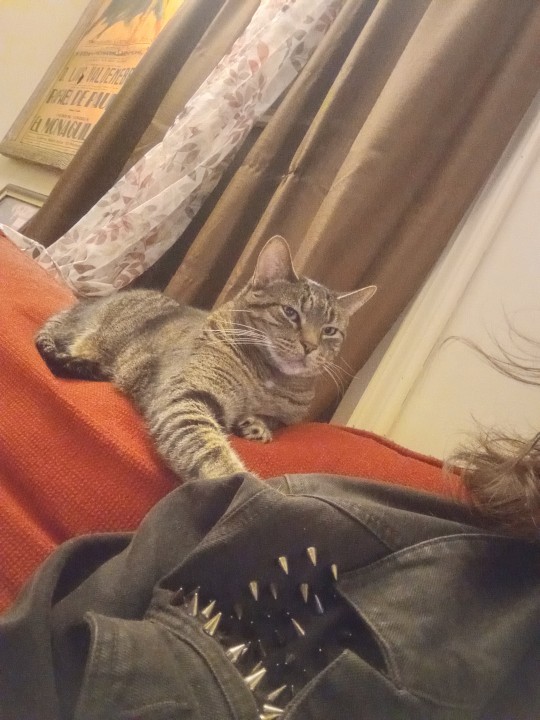
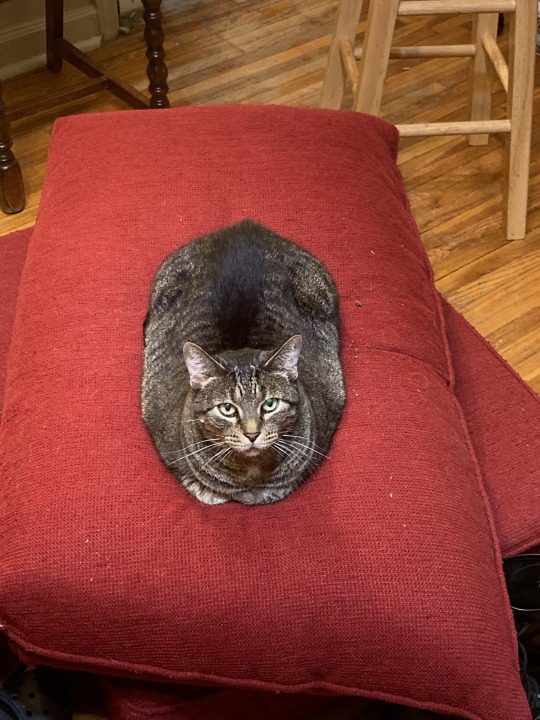
In my free time I like to get high and draw crazy shit with markers. I also journal. Though I have pretty bad carpal tunnel so these only happen in short bursts. I love retro videogames but the same applies here lol. I do more watching than playing these days. Atari, NES, SNES, SEGA installments, PS1, and arcade machines are an on-and-off fixation of mine.
I'm a language enthusiast. I used to be fluent in day-to-day Spanish but I haven't gotten to speak it in years so it's awfully rusty now </3 soy hispano y hablo mejor el spanglish :P I can read Spanish just fine. My #1 target language of interest is Japanese. I just got done with an Arabic class. Earlier this year I learned some ASL on the fly to communicate with a coworker, & took a Korean hangeul class (I somehow found that harder than Arabic).
I love many kinds of rock, metal, punk, new wave, alt, and experimental music. Lately I've been into dark trap, especially Ghostemane and Grim Salvo. Generally speaking, my favorite band is probably Black Sabbath (70s era). My fav solo artist is David Bowie.
Obviously, I love Star Trek. I've been a trekkie for ten years now. I started with next gen but TOS quickly became my favorite.
Some of my favorite books include Star Trek: The Motion Picture (ofc), The Lord of the Rings, Interview With The Vampire, and The Dead Zone (I like a lot of Stephen King). I'm currently reading a psychedelic fantasy series known as the Great Book of Amber by Roger Zelazny. So far I'm loving it.
That's all for now 🫡
4 notes
·
View notes
Text
The Round Door Rolls – 1925 Rolls-Royce Phantom I Jonckheere Coupe
Custom coachbuilding of the 1920s and 1930s was the ultimate form of self-expression for the rich and famous. Whether it was a Waterhouse-bodied Packard, a Figoni & Falaschi-bodied Delahaye or a Murphy-bodied Duesenberg, the affluent could essentially own a one-of-a-kind vehicle. Each of these famous coachbuilders was known for their specialized workmanship and was commissioned to build custom bodies over the years. Conversely, a company more accustomed to clothing buses and trucks with their commercial styling wouldn’t be the typical choice to build the coachwork for a Rolls-Royce, yet Jonckheere Carrossiers of Belgium did just that when they re-bodied a 1925 Phantom I with what could arguably be considered the most ominous Rolls-Royce coachwork ever created.
In May of 1925, Rolls-Royce launched the New Phantom (today noted as the Phantom I) to replace the 40/50 model, which was from then on referred to as the Silver Ghost. With increasing competition from the likes of Hispano-Suiza and Isotta Fraschini, a power boost was the logical upgrade. The New Phantom was, in fact, only the 40/50 chassis with a slightly larger engine. An increase in displacement from 7428cc to 7668cc and the change from side valves to overhead valves were the only major powertrain improvements! The braking system on the other hand was dramatically improved when front wheel brakes were installed. The conversion from side valves to overhead valves also meant a slightly higher bonnet and that would come to influence styling as PI chassis began the trek to various coachbuilders.
Source: Heacock Classic

0 notes
Text
So apparently, (at least) three times there were plans for a Hispanic (at least based on name) main character on Star Trek that were scratched. The first is from TOS, José Ortegas, who appeared in the pilot as the unnamed-on-screen Brazilian-American José Tyler, but never appeared again (unless one wants to count "The Menagerie"). Second would be Macha Hernandez on TNG, inspired by Vazquez from Aliens. Sometime in early 1987 during development, she morphed into Tanya, and later Tasha, Yar. Last would be Julian Amoros, for DS9, who became Julian Bashir after casting, to better match actor Alexander Siddig's ethnicity.
I don't really have much to say on it, but it's a thing I noticed.
#Star Trek#TOS#TNG#DS9#José Ortegas#José Tyler#Macha Hernandez#Tasha Yar#Yar#Julian Amoros#Julian Bashir#Bashir#Alexander Siddig#Trek Hispano#Star Trek Creation#I do kinda wish that SNW had picked up the character of José Tyler#Although Erica Ortegas might be some sort of reference
119 notes
·
View notes
Photo
[Image description: Three gifs of Hugh Culber speaking. All of them have subtitles in white, except for words in Spanish are yellow. They read "I was devastated when my tío died. You ever been to a standing funeral? El muerto parado. My, um, tío Cesar was this infamous card shark."]



Wilson Cruz as DR. HUGH CULBER + Speaking Spanish STAR TREK: DISCOVERY → S04E04, ALL IS POSSIBLE
#Star Trek#DIS#DSC#All Is Possible#Discovery spoilers#Star Trek: Discovery spoilers#Hugh Culber#Culber#Trek Hispano#gif#Esto
251 notes
·
View notes
Note
𝗱𝗮𝗿𝗲 𝘁𝗼 𝗴𝗼 𝘄𝗵𝗲𝗿𝗲 𝗻𝗼 𝗼𝗻𝗲 𝗵𝗮𝘀 𝗯𝗲𝗲𝗻 𝗯𝗲𝗳𝗼𝗿𝗲? hi mars !, we are a new hispanic rpg based on 𝘀𝘁𝗮𝗿 𝘁𝗿𝗲𝗸 , which follows the lives of the crew aboard the ussiw beholder, we were wondering if you could, please, give us a promo or shout out? hope you have a nice day ✨
s h o u t o u t ♡
chéquenlos!!
1 note
·
View note
Link
There’s a personal story I’ve told many times about my experience of being African American in the great outdoors.
Back in the late 1990’s I used to live in Bellingham, Washington. One afternoon, I went with a couple of (white) friends on a hike up Mt. Baker. It was a typically overcast day in the Pacific Northwest, and as we hiked, we began to feel the chill in our bones. We stopped at a lodge along the trail with a gift shop and a roaring fire. As my friends perused souvenirs, I walked over to the fire and with my shawl wrapped around me, stood there like a content cat warming my backside. Soon I noticed an elderly white woman staring at me. As I adjusted my stance under her gaze, she jumped. I jumped. Then she walked slowly in my direction. She said, “Dear, I thought you were a beautiful Indian statue!”
To this day I can’t quite remember what I said (I believe I mumbled a thank you). I think I was just confused and astounded, because in one breath she had managed to compliment me and consider me not real.
I have many stories like this. In every circumstance, I usually wonder: Has this person ever seen a black person hiking? Has she or he ever seen a picture or heard a story of someone who looked like me in a similar setting?
While I consider myself a predominately urban person (born and bred in New York), I am no stranger to the backpack and the hiking boot. I’ve had the privilege of backpacking in many different parts of the world, trekking up to 17,000 feet. For a time, I lived in Nepal with regular access to the Himalayas. I have been serving as a member of the National Parks Advisory board for the past seven years, and before that I served on the Second Century Commission, a team of advisors who in 2009 gathered to draw out issues and priorities for the National Park Service's next 100 years. During that time, I have had the privilege to visit many national parks across the country.
A Surprising Presence, Breaking Myths
But I have always been astonished at how often white people are surprised by my presence in these spaces. For the most part, people are not unkind. I’ve been asked more than once to have my picture taken, and people want to know where I come from. Still, it never ceases to leave me with a deep-seated feeling of discomfort, of being different, and feeling decidedly out of place in these outdoor settings.
Today, part of my work as a writer, public speaker, and geography professor at the University of Kentucky is challenging all us to think differently about who has something to offer when it comes to the outdoors and environmental issues. But it started off as something personal.
Was that myth true—that “Black people don’t ______ (fill in the blank: swim, camp, ski, and so on)”? I didn’t think so. I watched my parents care for twelve acres of land that belonged to someone else and do so for nearly fifty years. My father cared for every part of that landscape: the flower gardens, the fruit trees, the lawn. My mother was especially skilled at growing tomatoes, basil, and dill in the vegetable garden. And she was always pointing out the wildlife to us—the black squirrels, the white deer, and the snapping turtles. While the estate owners visited on weekends and holidays, my family lived there 24/7. My parents couldn’t afford to take us on vacation to a national park, so that estate was where my brothers and I developed a great appreciation for nature.
Though the outdoors shaped my own childhood, I rarely saw black and other non-white people in mainstream coverage of the topic. Mainstream media and environmental organizations have been slow to consider or represent a large chunk of those who love wild places—and in light of the celebrations around the national park system this year, it’s become even clearer that we still have a lot of work to do.
If, as I have, you sorted through the historical narrative surrounding the national parks, the movies and books about the parks, the magazine and newspaper coverage of the parks—you’d come up with narratives that largely leave out the experiences of people of color.
Some might say that many of these works and organizations are about the parks, not people. But I would respond that the parks are about us. And that “us” has always been diverse, even if those in the positions to write the stories and make the policies have not.
The parks are a repository of memory—only, the different or more challenging parts of our history don’t get as much airtime in our national narrative. We’ve all heard about John Muir and President Roosevelt standing on Glacier Ridge in 1903. But at that same time, African Americans could not move freely in any space around the country because of Jim Crow; American Indians were still fighting about being forcibly removed from much of that park land; Hispanos in New Mexico were watching their access to these lands diminish as federal land agencies took over; and a diverse Asian population was experiencing a variety of challenges for simply being different on this soil.
Our Black Park History
Did you know there was an all-black Civilian Conservation Corp that was responsible for taking care of the trails at Mt. Rainier? Have you heard about Israel Lafayette Jones, who bought three islands in Key Biscayne back in the late 1800’s and whose son, Lancelot Jones, ended up resisting the overtures of developers who wanted the land and instead made a deal with the NPS? Or MaVynee Betsch, a woman who gave away all of her wealth (including her home) to environmental causes starting in the 1970s? She convinced the NPS to protect 8.2 acres of sand dunes on Amelia Island’s American Beach; her great grandfather had purchased it in the 1930’s so that black people could live on and go to the beach in Florida during Jim Crow segregation.
None of these stories are any less important simply because we might choose to universalize one piece of the parks story. That’s why so much of my studies focus on what gets left out. It’s still happening today: films like the recent National Parks Adventure feature a predominantly white cast; mainstream outdoor media (Outside included) still feature a majority of white subjects; and people of color are seriously underrepresented in environmental organizations.
When I look at the majority of environmental and outdoor media these days, I don’t see me. More specifically, I don’t see a space for me. Making that space is critical: my run-in with the woman on Mt. Baker, for example, gave us a chance to engage and have our worlds shift just a little. By seeing people who look different from us in these spaces—with their histories, memories, and their possibilities—our story about the parks, and environment in general, can more fully embrace the complexity of the human experience.
Representing All People: Making it Happen
How can we make this happen? I’m privileged to be part of the Next 100 Coalition—an ethnically and racially diverse group of civil rights, environmental justice, conservation, and community activists. We believe that in this centennial year, staff, leadership and community engagement with all our public lands agencies (National Park, Forest Service, Fish & Wildlife, Bureau of Land Management) does not reflect the growing diversity of our country. We have asked President Obama to issue a Presidential Memorandum that addresses workforce diversity, landscape scale conservation, stakeholder engagement, historical and cultural preservation, and access to public lands. We met with Christy Goldfuss, managing director of the White House Council on Environmental Quality (CEQ), to discuss our vision and strategize specific policy suggestions. And across the country, we continue to talk with the press and media, both locally and nationally, to tell our stories and make our case.
I believe that people tend to write and create what they know. You want a different story? Let’s get different people to tell it! Part of the challenge of representation is understanding who has the privilege of being part of these structures—and who does not. It’s pretty simple: More diversity at the table means more diverse experiences, knowledge, and ways of seeing the world.
Folks to Read About
There are folks like Audrey Peterman, who blogs for the Huffington Post and wrote two books with her husband, Frank, on their national parks experience. Or Marquetta Goodwine (known as Queen Quet) who, along with her community in South Carolina, was instrumental in creating the Gullah Geechee Cultural Heritage Corridor. John Francis spent 22 years walking across the U.S. to spread a message of environmental respect (and did it without talking for 17 of those years). Jhana Senxian, a Harvard-trained anthropologist, founded Sustainability Guild International in Boston to create a new model for sustainability and community engagement in the city. Jason Brown, the NFL center who walked away from millions of dollars to start a thousand acre farm in North Carolina, learned to farm on YouTube (really) and now gives away thousands of pounds of vegetables every year. How cool would it be to have the face of this black football player on a movie or television screen? Can you imagine all the kids who would be surprised and positively impacted by that image?
I hope a lot of people will go watch the movies and read the books celebrating the centennial and our national parks. I’m guessing that for many, the closest they may get to some of our grander spaces like Yosemite or the Grand Canyon is the movie theater or that book. But I also hope that there are those who will wonder why their presence in this story is not apparent; who will take this opportunity to talk about it with others; and who will not be stopped from going to experience the great outdoors wherever they live.
18 notes
·
View notes
Text
Everyone should be able to accomplish this task
Ready to take up a new challenge of becoming MLA, Kang said of jumping from municipal to provincial politics. Have been involved with politics not just city politics, but in provincial and federal politics as well so it isn something new. It myself running as a candidate for provincial politics that is the challenge for me.
wholesale nfl jerseys from china Los datos parecen avalar esta interpretacin. En Estados Unidos viven 42 millones de hispanos y las proyecciones indican que sern 60 millones en 2020. El ingreso promedio de un hogar hispano es de 33.500 dlares por ao, Cheap Jerseys free shipping en contraste con 44.200 dlares para la poblacin en general, pero la brecha est disminuyendo y el poder de compra ya es formidable.. wholesale nfl jerseys from china
wholesale jerseys from china That's about it for this job, everyone should be able to accomplish this task, if the right tools are available. Having them available is something that should be taken care of before we depart on any trip. No one wants to be left on the side of the road without a way to fix this issue.. wholesale jerseys from china
Cheap Jerseys china The rules regarding alcohol purchases outside of Canada still hold true, despite the increased in allowance. For example, you can only claim duty free status if your trip is 48 hours or longer in length. For example, certain fruits, https://www.wholesalejerseyslan.com/ meats and vegetables are prohibited from entering Canada as are weapons such as guns, mace, and pepper spray something worth noting if you find yourself at the local gun show.. Cheap Jerseys china
wholesale nfl jerseys Albeit not more often than not perceived by using precept society, there are actually two recognizing kinds of members who affection to look at flying creatures. Firstly, you might have the usual birdwatchers; essentially that is any individual who simply cherishes staring at feathered creatures paying little mind to where they are. It would not make a change what animal categories it is going to be, it might be the neighborhood robin that goes to your winged animal desk commonplace or taking a trek to the local lake, watching the waterfowl and rationally recording their identities and shenanigans.. wholesale nfl jerseys
wholesale jerseys In the summer of 1984 the team's fortunes changed forever when it received the third pick of the NBA draft, after Houston and Portland. The Rockets selected Hakeem Olajuwon, wholesale nfl jerseys the Blazers jumped on Sam Bowie, and the Bulls grabbed shooting guard Michael Jordan out of the University of North Carolina. The team, with new management in owner Jerry Reinsdorf and General Manager Jerry Krause, decided to rebuild around Jordan. wholesale jerseys
wholesale jerseys Never was strict truth better expressed in a political instrument than in the preamble of the first union Treaty (1413). It begins with the words: This union, being the outcome not of hatred, but of love cheap louis vuitton words that Poles have not heard addressed to them politically by any nation for the last hundred and fifty years. The Polish State offers a singular instance of an extremely liberal administrative federalism which, in its Parliamentary life as well as its international politics, presented a complete unity of feeling and purpose. wholesale jerseys
cheap jerseys David Pocock, 6. Scott Fardy, 5. Sam Carter, 4. Insider selling aside, Michael Kors is one of today's hottest high end fashion brands, and that's translated into one of the best performing stocks in retail since its debut on the market in late 2011, http://www.okcheapjerseys.com/ the share price has more than doubled. But with all that growth,? The Motley Fool's new premium report on Michael Kors gives investors all the information they need to make the right decision. We cover the key must watch areas, opportunities, and threats to the company that investors need to know. cheap jerseys
wholesale nfl jerseys from china 1. Viens no labkajiem veidiem, k atrast labu advokts ir jldz kdam, kuru viedoklis tev uzticties. Cits advokts, jsu grmatvedis, baieris, kolis, imenes draugs, biznesa pazanos. Source your replacement cable I used a strand from an old ribbon cable, strip a short length of insulation and bend the stripped end at a right angle. wholesale jerseys Gentley prise the brush from the carrier and push the stripped wire down into the locater slot push the brush back on top of it, bend the wire round the bottom of the brush carrier and trim it off. I find small nail clippers make good wire cutters and can be used for stripping insulation as well onec they have been used in this manner they are useless as nail clippers. wholesale nfl jerseys from china
Cheap Jerseys from china Each requires its own unique treatment to be effective and the sooner the better to prevent pathogenic factors from going deeper. In both cases the aim is to expel the pathogen and restore Righteous Qi throughout the body. Additionally, https://www.cheapjerseys18.com/ heat may need to be cleared and fluids restored in Wind Heat, while in Wind Cold we often work to resolve damp phlegm that accumulates in the sinus cavities and lungs.. Cheap Jerseys from china
wholesale jerseys from china The third day is probably going to be telling and if NZ pick up some early wickets it is by no means innconceivable that both sides could be evenly poised at the end of their first innings. In that case how much NZ scores in their 2nd innings and how much the pitch turns on the last day becomes key. There is still a long way to go in this test wholesale jerseys from china.
0 notes
Text
The Round Door Rolls – 1925 Rolls-Royce Phantom I Jonckheere Coupe
Custom coachbuilding of the 1920s and 1930s was the ultimate form of self-expression for the rich and famous. Whether it was a Waterhouse-bodied Packard, a Figoni & Falaschi-bodied Delahaye or a Murphy-bodied Duesenberg, the affluent could essentially own a one-of-a-kind vehicle. Each of these famous coachbuilders was known for their specialized workmanship and was commissioned to build custom bodies over the years. Conversely, a company more accustomed to clothing buses and trucks with their commercial styling wouldn’t be the typical choice to build the coachwork for a Rolls-Royce, yet Jonckheere Carrossiers of Belgium did just that when they re-bodied a 1925 Phantom I with what could arguably be considered the most ominous Rolls-Royce coachwork ever created.
In May of 1925, Rolls-Royce launched the New Phantom (today noted as the Phantom I) to replace the 40/50 model, which was from then on referred to as the Silver Ghost. With increasing competition from the likes of Hispano-Suiza and Isotta Fraschini, a power boost was the logical upgrade. The New Phantom was, in fact, only the 40/50 chassis with a slightly larger engine. An increase in displacement from 7428cc to 7668cc and the change from side valves to overhead valves were the only major powertrain improvements! The braking system on the other hand was dramatically improved when front wheel brakes were installed. The conversion from side valves to overhead valves also meant a slightly higher bonnet and that would come to influence styling as PI chassis began the trek to various coachbuilders.
Source: Heacock Classic

0 notes
Note
List of Latino actors in Star Trek
I'm assuming that this is asking for a list of Latino actors in Star Trek, and since we're nearing the end of Hispanic Heritage Month, I compiled an incomplete list of Hispanic and Latine Actors in Star Trek.
Firstly, there are various main cast members:
Robert Beltran: Plays Chakotay in Voyager and Prodigy, Mexican-American
Roxann Dawson: Played B'Elanna Torres in Voyager, Puerto Rican
Zoe Saldaña: Played Nyota Uhura in the AOS films, Dominican/Puerto Rican
Wilson Cruz: Plays Hugh Culber in Discovery, Puerto Rican
Blu del Barrio: Plays Adira Tal in Discovery, Argentinian-American
Santiago Cabrera: Plays Cristóbal Ríos in Picard, Chilean
Noël Wells: Plays D'Vana Tendi in Lower Decks, part Mexican
Rylee Alazraqui: Plays Rok-Tahk in Prodigy, Argentinian-American
Melissa Navia: Plays Erica Ortegas in SNW, Columbian-American
And then there's those playing more minor roles. I mostly kept to those that played named characters.
Perry Lopez: Played Esteban Rodríguez in TOS, Puerto Rican
Ricardo Montalbán: Played Khan Noonien Singh in TOS and films, Mexican
Percy Rodríguez: Played (Commodore) Stone in TOS, Afro-Portuguese
Ned Romero: Played Krell, Anthwara, and Chakotay's grandfather in TOS, TNG, and Voyager
George de la Peña: Played Solis in TNG, Argentinian-American
Carlos Ferro: Played Dern in TNG
Cástulo Guerra: Played Mendoza in TNG, Argentinian
Frank Luz: Played Odan in TNG
Benito Martínez: Played Salazar in TNG, Guatemalan-American
Gina Ravera: Played Tyler in TNG, Puerto Rican
Marco Rodríguez: Played Paul Rice and Telle in TNG
Benita Andre: Played Anara in DS9, Guatemalan-American
Carlos Carrasco: Played D'Ghor, Bahrat, and Krole in DS9 and Voyager, Panamanian-American
Raymond Cruz: Played Vargas in DS9, Mexican-American
Bertila Damas: Played Sakonna, Three of Nine, and Marika Wilkarah in DS9 and Voyager, Cuban-American
Carlos LaCamara: Played Retaya in DS9, Cuban
F.J. Rio: Played Enrique Muñiz in DS9
Gregory Sierra: Played Entek in DS9
Daniel Zacapa: Played Henry Garcia in DS9, Honduran
Kamala Lopez: Played Tincoo in Voyager
Douglas Spain: Played young Chakotay in Voyager
Philip Anthony-Rodríguez: Played Juan in Enterprise
Michelle C. Bonilla: Played Bu'kaH in Enterprise, Chicana
Josh Cruze: Played Ramírez in Enterprise
Efrain Figueroa: Voiced universal translator in Enterprise
Hilde Garcia: Played Rossi and various background characters in Enterprise and Voyager, Cuban-American
Ricky Luna: Played Carlos in Enterprise
Ada Maris: Played Erika Hernández in Enterprise, Mexican-American
Enrique Murciano: Played Tolaris in Enterprise, Cuban-American
Marco Sanchez: Played M. Romero in Enterprise
Geno Silva: Played Vrax in Enterprise, Mexican-American
Clifton Collins Jr.: Played Ayel in the AOS films, Mexican-American
Amanda Arcuri: Played Val Sasha in Discovery, Argentinian/Italian
Ache Hernández: Played Kyheem in Discovery, Cuban
Xavier Sotelo: Played Diego Vera in Discovery
Sol Rodríguez: Played Teresa Ramírez in Picard, Argentinian
Carlos Alazraqui: Plays Les Buenamigo in Lower Decks, Argentinian-American
Gabrielle Ruiz: Plays Lemonts, Castro, and T'Lyn in Lower Decks, Mexican-American
Melissa Villaseñor: Plays Nandi in Prodigy
Carlos Albornoz: Played Buckley in SNW, Latino-Canadian
Oscar Moreno: Plays Zuniga in SNW, Columbian
#Star Trek#Trekking across the universe#Trek Hispano#This was originally in some sort of a neat order but that kind of disappeared#I stuck to actors for whom I could find some sort of direct reference to being Hispanic/Latine
14 notes
·
View notes
Text
5 cidades para se conhecer no Chile
Nem só de Santiago vive o Chile, cheio de encantos que vão além de sua capital. Apesar de fazer sucesso entre os brasileiros, o país logo ao lado do Brasil tem muito mais para ser visto, como belas paisagens entre as montanhas e cidades litorâneas bem charmosas.
1. Valparaíso
Entre duas colinas, a cidade é a segunda mais visitadas entre as chilenas. A faixa litorânea, os morros, os edifícios coloniais do século 19 e uma das casas do famoso poeta Pablo Neruda são o que tornam o lugar tão especial.


2. Viña del Mar
Ao norte de Valparaíso, a chamada Cidade Jardim reúne muitas opções de lazer, especialmente no verão. Esportes aquáticos, difícios patrimoniais e o maior festival musical hispano-americano são alguns dos atrativos desta pequena cidade. A orla carrega consigo construções mais modernas, destacando a arquitetura atual, além de praias badaladas.


3. Puerto Varas
Nas margens do ago Llanquihue, a conhecida “Cidade das Rosas” é um dos destinos mais charmosos do país Colonizada por alemães e suíços, Puerto Montt tem casinhas germanas espalhadas por seu território pitoresco, além do vulcão Osorno fazendo cenário e a Igreja Del Sagrado Corazón de Jesus, uma das principais atrações.


4. Pucón
Acessada de carro ou de trem, a cidade reúne bastante lazer tanto no verão quanto no inverno. Centros termais, cassinos, esqui e maravilhas naturais são alguns de seus atrativos.


5. Torres del Paine
Um dos lugares mais exuberantes e mundialmente famosos do Chile, o Parque Nacional Torres del Paine reúne o melhor da natureza, repleto de lagos, geleiras, campos de flores, fiordes e montanhas. Em meio a Patagônia, é inevitável a ida em circuitos de trekking pelas belas paisagens da região, como se vê no glaciar Grey, na Lagoa Azul e no Valle do Francês. Aproveite para ver animais de perto, como raposas, guanacos e pumas.


0 notes
Text
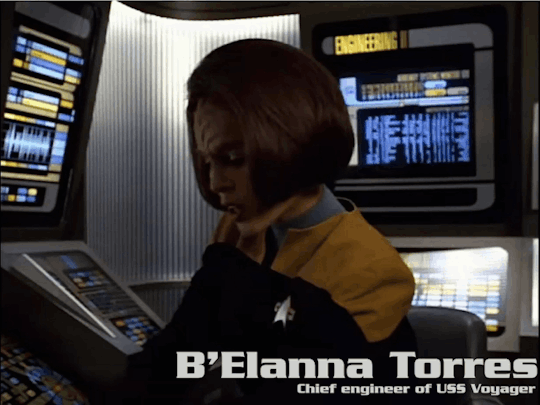
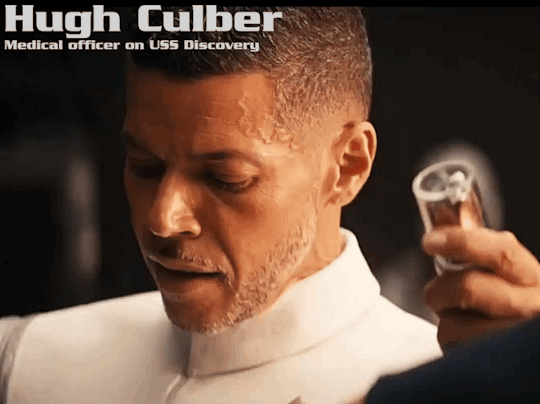

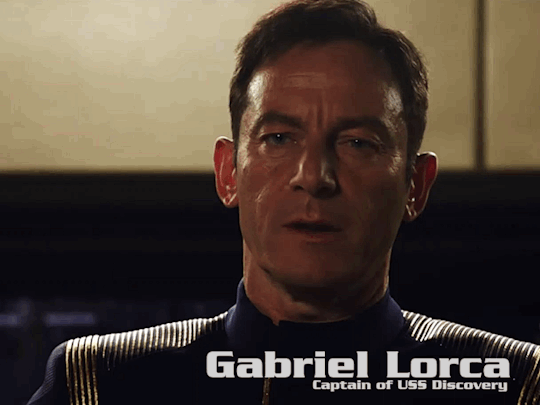


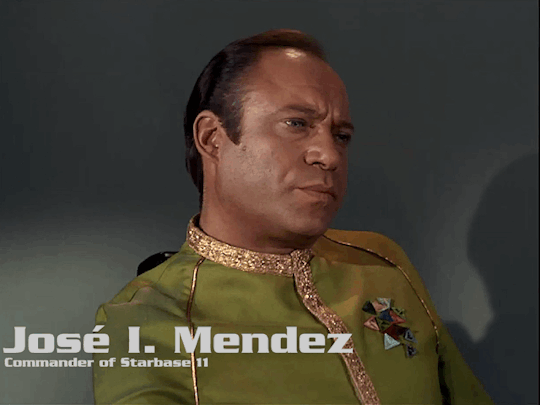
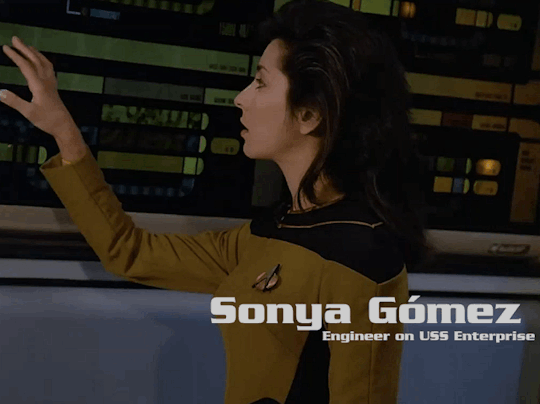


Hispanic and Latine Characters of Star Trek
B'Elanna Torres
B'Elanna Torres is probably the most well-known Hispanic character of Star Trek. Played by latina actress Roxann Dawson, she appeared in all 168 episodes of Star Trek: Voyager. Torres served as the chief engineer of USS Voyager from the third episode onwards and held the provisional rank of lieutenant, junior grade.
Hugh Culber
Hugh Culber appears on Star Trek: Discovery, and is played by Afro-Puerto Rican actor Wilson Cruz, who says that, despite having a "very white last name", Culber is none the less "very much Latino." Culber started as the husband of main cast member Paul Stamets, and was promoted to the main cast starting in the second season. He holds the rank of lieutenant commander and is one of the doctors aboard USS Discovery.
Cristóbal Ríos
Cristóbal Ríos is the captain of the civilian vessel La Sirena. He is Chilean, like actor Santiago Cabrera, and has appeared in all but the first two episodes of Star Trek: Picard. He is one of a handful of characters on Star Trek to have spoken Spanish.
Gabriel Lorca
Gabriel Lorca was the first captain of USS Discovery, and was a main cast member of the first season of Star Trek: Discovery, appearing in all but the first two episodes. He was played by actor Jason Isaacs. The Lorca seen on the show is later revealed to be from the mirror universe and becomes an antagonist in the later part of the season before dying in the final episode.
Erika Hernández
Erika Hernández was the captain of Earth's second Warp 5 ship, Columbia. Played by Mexican-American actress Ada Maris, Hernández appeared in the Star Trek: Enterprise episodes "Home", "Affliction", and "Divergence". She was meant to be "equal in stature" to the captain of the main cast, and if the show had been renewed for a fifth season, would have been given an expanded role.
Esteban Rodríguez
Esteban Rodríguez was a lieutenant science officer aboard the USS Enterprise. He appeared in only one episode of Star Trek: The Original Series, "Shore Leave", during which his imagination brought a flock of birds, a Bengal tiger, and a Japanese warplane to life. He was portrayed by Puerto Rican actor Perry Lopez.
José I. Mendez
José I. Mendez was the commanding officer of Starbase 11, holding the rank of commodore. He appeared in both parts of Star Trek: The Original Series episode "The Menagerie", played by Malachi Throne. He greeted the main cast when they visited the space station, and later on an illusion of him convened a court martial on Spock. In the novels, he is given the full name of José Iglesias de Mendez.
Sonya Gómez
Sonya Gómez was an engineer on the USS Enterprise in Star Trek: The Next Generation. An enthusiastic ensign, she appeared in the episodes "Q Who", in which she famously spilled hot chocolate on the captain, and "The Samaritan Snare". Originally intended to appear in three episodes, she was played by actress Lycia Naff.
Ayala
Ayala was a security officer aboard USS Voyager, holding the provisional rank of lieutenant, junior grade. Ayala was a background character, never given a first name and with few lines, despite appearing in 125 episodes of Star Trek: Voyager. He was played by actor Tarik Egrin, who was only credited in two episodes.
Enrique Muñiz
Enrique Muñiz was an engineer with the rank of crewman on the space station Deep Space Nine. Played by Hispanic-American actor F.J. Rio, he appeared in the Star Trek: Deep Space Nine episodes "Starship Down", "Hard Time", and "The Ship", in which he is killed and becomes the first character character in Star Trek to speak Spanish.
Extra mention to:
Lt. Martínez, a background character with very few lines who appeared in 84 episodes of Star Trek: The Next Generation as well as the films Star Trek: First Contact and Star Trek: Insurrection. He was played by Michael Braveheart, uncredited.
José Tyler, originally named José Ortegas and slated to be a series regular on Star Trek: The Original Series, became a Brazilian-American and only appeared in "The Cage" and flashback sequences in "The Menagerie". He was played by Peter Duryea.
There are undoubtedly many more Hispanic and Latine characters in Star Trek, but they are not mentioned as such or only appear once.
-
Entries based largely on names, since that's by and large the only information to go off of. Diacritics were added to names as per standard Spanish rules because they should be able to handle diacritics in the 22nd/23rd/24th century.
For more information and clarification on characters and terminology included, see here.
If you're wondering, Hoshi Sato and Saru are the only other characters to speak Spanish, although Michael Burnham's speech was translated to Spanish during a UT malfunction.
#Star Trek#Trek hispano#VOY#DIS#DSC#PIC#DS9#TNG#TOS#ENT#B'Elanna Torres#Hugh Culber#Cristóbal Ríos#Cristobal Rios#Gabriel Lorca#Erika Hernández#Erika Hernandez#Esteban Rodríguez#Esteban Rodriguez#José Mendez#Jose Mendez#Sonya Gómez#Sonya Gomez#Ayala#Enrique Muñiz#undescribed#I would be grateful to anyone who can add an image description#This is fairly experimental#Tricorder log
290 notes
·
View notes
Text
Kudos to Discovery for having Hugh Culber talk about his Tío Cesar and finally giving us some in-show evidence of him being Hispanic.
#Star Trek#DIS#DSC#All Is Possible#Star Trek: Discovery spoilers#Discovery spoilers#Hugh Culber#Trek Hispano#And the mention of el muerto parado (a Puerto Rican practice I hadn't heard of) makes me wonder more about the treatment of dead bodies#Starfleet uses torpedo 'burials in space' but what about the average Federation citizen? And other species/nations/cultures?
20 notes
·
View notes
Text
One missed opportunity in Voyager is B'Elanna utilizing Spanish/Klingon multilingual swearing. I can just see her calling someone a ¡jodido petaQ!
6 notes
·
View notes
Text
Me gusta cuando la animación no subestima a los niños, dice Zoe Saldaña
Los Ángeles (EE.UU.), 9 abr (EFE).- Tras surcar el espacio con "Star Trek", la exuberante Pandora con "Avatar" y las viñetas de superhéroes con Marvel, Zoe Saldaña desembarca ahora en la aventura en "stop motion" de "Missing Link", un filme de animación con el que defendió un cine respetuoso y estimulante para los más pequeños. "Me gusta cuando la animación no subestima la inteligencia de un niño (...), cuando muestra las complejidades de la vida", explicó a Efe la actriz de raíces dominicanas y puertorriqueñas. "Los niños afrontan muchas adversidades: cuando pierden a un pariente, cuando están solos, cuando son huérfanos, cuando los están agobiando en la escuela, cuando tienen una incapacidad física... Sufren mucho y que nosotros no interpretemos ese sufrimiento de una manera crítica es ofensivo para ellos", aseguró. Saldaña (Passaic, EE.UU., 1978) presta su voz a la versión original de "Missing Link", película que llega este fin de semana a Estados Unidos y cuyo doblaje también incluye a Hugh Jackman y Zach Galifianakis. En este largometraje, Sir Lionel Frost, un elegante y tenaz aventurero británico, recibe una carta de una misteriosa criatura que parece ser el eslabón perdido de la humanidad. Con referentes como "Indiana Jones" y Julio Verne en su hoja de ruta, la clave de "Missing Link" reside en el "stop motion": una técnica que une fotografías con diminutas modificaciones entre ellas para aparentar la sensación de movimiento. En esta obsesión por la meticulosidad y la paciencia elevadas al infinito se ha especializado Laika Studios, la compañía responsable de joyas como "Coraline" (2009) y "Kubo and the Two Strings" (2016). "Este tipo de arte de animación es algo como que ya no existe si no fuera por Laika. Se han dado a la misión, no la tarea, de no permitir que esto muera", indicó la actriz. "Es ese tipo de estudio donde trabajan artesanos. Y el trato que tienes con ellos es bien diferente al trato que tendrías con cualquier otro estudio, que a veces se siente como una carnicería", bromeó. Saldaña se encarga en "Missing Link" de Adelina Fortnight, una mujer latina, viuda, sensata y muy independiente que pone el contrapunto al orgullo de Sir Lionel Frost y la chiflada bondad de Mr. Link. Pese a ser un rol animado, la intérprete subrayó su fiel acercamiento al mundo hispano: "Reconozco sus tratos en todas las mujeres que me han criado". "La mujer latina que yo conozco, la que me ha criado a mí, y la que veo en telenovelas no es la misma. Adelina para mí es algo más familiar. Es una señora que ha tenido que empezar de nuevo dos veces. Primeramente, en un mundo nuevo (como inmigrante), y después, como persona solitaria porque ha perdido a su pareja", indicó. A pocas semanas de que se estrene "Avengers: Endgame", Saldaña, cuyo personaje Gamora murió a manos de su padre Thanos en "Avengers: Infinity War" (2018), recuerda todavía el cariño con el que los fans despidieron a su papel. "En el estreno, la niña de la mánager de un actor, que tendría unos 12 o 13 años, estaba sentada como a dos filas de mí. Cuando a Gamora la tiran por el precipicio, la niña gritó con un llanto y la mamá la tuvo que parar y sacar. Yo me quité los zapatos y salí (...). La abracé, le dije un secreto y ya se pudo calmar", contó. La actriz también defendió, junto al reparto de "Guardians of the Galaxy", que Disney recuperara al director James Gunn, después de que fuera despedido de esta saga por unos antiguos y polémicos tuits. "Disney hizo lo que era correcto (readmitiéndolo). Actuaron impulsivamente y fue una cosa con la que, siendo una organización tan grande que crea contenido para los jóvenes, mandaron un mensaje muy definitivo, de juicio, de cálculo y de castigo, a una persona que legalmente no estaba bajo ninguna investigación. Eso fue lo que yo critiqué", argumentó. Por ello, se mostró satisfecha de que los jóvenes hayan recibido finalmente la idea de que "no pasa nada por equivocarse", como Gunn, si hay disculpas y rectificaciones sinceras. Por último, la latina está ya inmersa en el rodaje de las cuatro secuelas de "Avatar", la película más taquillera de la historia con 2.788 millones de dólares. Y aunque dijo que se trata del "personaje más desafiante que jamás" ha interpretado, Saldaña se mostró confiada por estar a las órdenes de James Cameron: "Este señor tiene una mente muy brillante y la contribución que está haciendo al cine y la humanidad van mucho más allá de hacer el taquillazo más grande". En la imagen un registro de la actriz estadounidense Zoe Saldaña (c). EFE/Archivo
#_revsp:efe.es#_uuid:0a10d62a-9213-3dbf-9f18-811d47a8b568#_category:yct:001000076#_lmsid:a077000000Kgol7AAB
0 notes
Text
Artistas latinos abogan por más inclusión en películas de Hollywood
Los Ángeles (EEUU), 25 feb (EFE).- La octogésimo novena edición de los premios Óscar, que tendrá lugar el domingo en el Teatro Dolby, de Los Ángeles (EEUU), es motivo para que algunos actores hispanos aboguen por más inclusión en la industria de Hollywood. "¿Por qué no hay tantos nominados latinos a los Oscar? Porque los estudios no están contando nuestras historias", lamentó en declaraciones a Efe la actriz mexicana Karla Souza. "Los latinos representamos el 38 % de los que compran boletos de cine los fines de semana. Entonces, sí quieren nuestro dinero, pero no quieren nuestras historias", agregó la actriz de la serie de la cadena ABC "How to Get Away with Murder". En la ceremonia de este domingo, entre los únicos nominados latinos al Oscar figura Lin-Manuel Miranda, de raíces puertorriqueñas, en la categoría mejor canción por "How Far I'll Go", de la cinta de animación "Moana". La pequeña lista de latinos se completa con el mexicano Rodrigo Prieto, en la categoría mejor fotografía por su trabajo en "Silence", mientras que el español Juanjo Jiménez compite por el premio a mejor cortometraje de ficción con "Timecode". "No hay ni un solo nominado latino por trabajar frente a las cámaras, que son los que están en la pantalla", señaló Souza, quien la noche del viernes recibió un premio de la Coalición Nacional de Medios Hispanos (CNMH) durante una gala en Los Ángeles. La mexicana, con 13 largometrajes a sus espaldas, recordó la campaña que realizaron los afroamericanos el año pasado por la baja presencia de artistas de esta comunidad en esa edición de los Óscar, y, estima, esa es la razón por la que en la gala del domingo no se haya repetido esa exigua representatividad. "Pienso que es una falta que los latinos no están siendo reconocidos tan bien como los otros artistas", dijo a Efe Roberto Orci, guionista de películas como "Star Trek" y "Transformers", entre otras. "Necesitamos que más latinos reciban contratos para trabajar frente y detrás de cámaras", sugirió. Un reporte de la Universidad del Sur de California (USC), denominado "Inclusión o invisibilidad", analizó 414 películas exhibidas en 2015 y encontró que entre el elenco que tenía diálogo el 73.7 % eran actores blancos, el 12.2 % afroamericanos, el 5.1 % latinos, y el 3.9 % asiáticos. Por contra, la Oficina del Censo de EEUU señala que del total de la población de 323 millones en el país, los hispanos son el 18 %, los afroamericano el 13 %, los asiáticos 5.6 %. "No me gusta que son pocos los latinos nominados a los Oscar", dijo a Efe Justina Machado, actriz con créditos en 20 películas entre las que están "A.I. Artificial Intelligence" y "Full frontal". "La inclusión de las minorías en Hollywood tiene que ocurrir, y eso tiene que ocurrir rápido", añadió. El "Informe de Diversidad de Hollywood 2017", de la Universidad de California en Los Ángeles (UCLA), revela que las minorías raciales en EEUU suman el 40 % de la población, pero en los programas de televisión del año 2015 los actores de las minorías fueron el 24 %. El reporte señala que "los latinos son los más sub representados, en una relación de arriba de 3 a 1". Alex Nogales, director de la Coalición Nacional de Medios Hispanos (NHMC), dijo a Efe que su organización expone al liderazgo de la industria de cine los efectos negativos de la exclusión de minorías. "A mí nadie me puede decir que nuestros artistas latinos son menos que los blancos, negros u otro color", declaró. "Por eso, vamos a ser muy militantes con estos amigos dentro de la industria, para demandar que nuestros artistas tengan oportunidades", agregó. EFE
#_author:im/lce/cav#_revsp:efe.es#_uuid:cd8c9ac3-3416-3965-80c1-f222e64925e7#_category:yct:001000076#_lmsid:a077000000Kgol7AAB
1 note
·
View note
Text
Patrick Stewart: "Logan" contiene un mensaje político sobre los refugiados
Magdalena Tsanis Madrid, 20 feb (EFE).- El actor británico Patrick Stewart aseguró hoy en una entrevista con Efe que "Logan", la película con la que él y Hugh Jackman se despiden del universo de los "X-Men", contiene "una declaración política poderosa sobre el derecho de las personas a buscar un lugar en el que vivir a salvo". "El objetivo principal de los personajes en la película es llegar a la frontera y cruzarla para estar a salvo; y eso, en este momento en que hay cientos de miles de personas luchando por lo mismo, sin distorsionar la historia principal del filme, implica un fuerte mensaje político del que me siento orgulloso", señaló el actor, de 76 años. "Logan", que se estrenará en todo el mundo en la primera semana de marzo, es la más oscura y sangrienta de las tres películas sobre Lobezno. Hugh Jackman ha asegurado que será la última vez que encarne al mutante y aunque Stewart no es tan rotundo sobre su personaje, el profesor Charles Xavier, ve "muy improbable" que vuelva a ponerse en su piel. El director y guionista James Mangold ("Walk the line", "The Wolverine") sitúa la acción en el año 2029, con los mutantes prácticamente extinguidos. Solo parecen quedar un Logan (Jackman) abatido y alcoholizado, el marginado Caliban (Stephen Merchant) y un enfermo profesor Charles Xavier. Sus días transcurren escondidos en un remoto rincón de la frontera con México hasta que irrumpe en sus vidas una misteriosa niña (la actriz hispano británica Dafne Keen) que también resulta tener un poder oculto. Mangold plantea el filme como una "road movie" crepuscular, en la que los personajes cruzan EE.UU. de frontera a frontera y se muestran más vulnerables, pero también más peligrosos, que en cualquiera de las anteriores entregas de la saga. "En el caso del profesor X es peligroso porque ya no tiene la habilidad de controlar por completo el poder de su mente y cuando está fuera de control puede ser devastador", asegura Stewart. Famoso también por su papel de Capitán Picard en "Star Trek" y reconocido en 2001 con la Orden del Imperio Británico, el actor subraya que la respuesta del público y la crítica hasta el momento está siendo "muy positiva" por el contenido emocional del filme. "Quizá sea momento de que el mundo de los superhéroes se presente de forma más humana, que sus poderes no sean el aspecto más dominante de su naturaleza, y que su fragilidad sea más evidente", opinó. En este sentido, el actor aplaude tanto la visión de Mangold como la "valentía" de los estudios 20th Century Fox por haberla apoyado "hasta el final", aunque eso haya implicado que la cinta reciba en Estados Unidos la calificación para adultos, con la consiguiente rebaja de expectativas de taquilla. Sobre la explícita violencia y el hecho de que en buena parte sea protagonizada por una niña, Stewart subraya que no es gratuita. "La violencia siempre ha estado en las películas de superhéroes. A mucha gente le preocupaba la presencia de una niña en medio de todo esto, pero aunque es impactante ver algunas de las cosas que hace, hay que tener en cuenta cómo evoluciona", apunta. El actor subraya que uno de los elementos más "poderosos" de la trama es precisamente cómo esa niña, Laura, que "ha sido creada para ser una maquina de matar", a través de su asociación con Logan y Charles Xavier, desarrolla una nueva sensibilidad. Mangold escribió el guión de "Logan" junto a Scott Frank, coguionista de "The Wolverine", y Michael Green ("Alien: Covenant"). La huella del western que siempre ha impregnado el personaje de Lobezno se hace aquí aún más patente, con referencias explícitas a otra película que también se mueve en territorio fronterizo y violento, "Shane", de George Stevens. EFE mt/jlg/agf
#_revsp:efe.es#_uuid:326888bc-6598-3786-9e49-e6a2c4c8542d#_author:(foto) (vídeo)#_category:yct:001000076#_lmsid:a077000000Kgol7AAB
0 notes